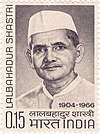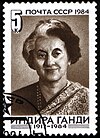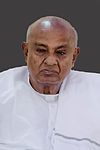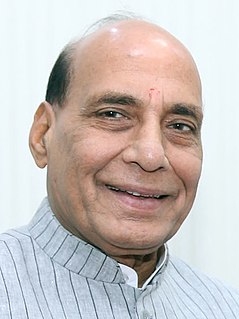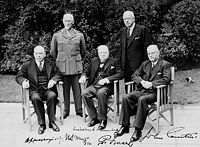 |
|---|
| This article is part of a series on the politics and government of India |
———————
Legislatures: ——————— Urban bodies: |
The Prime Minister of India is the chief executive of the Government of India. In India's parliamentary system, the Constitution names the President as head of state de jure , but his or her de facto executive powers are vested in the prime minister and their Council of Ministers. Appointed and sworn-in by the President, the prime minister is usually the leader of the party or alliance that has a majority in the Lok Sabha, the lower house of Parliament of India. [1]

The prime minister of India is the leader of the executive of the government of India. The prime minister is also the chief adviser to the president of India and head of the Council of Ministers. They can be a member of any of the two houses of the Parliament of India—the Lok Sabha and the Rajya Sabha —but has to be a member of the political party or coalition, having a majority in the Lok Sabha.
The head of government is either the highest or second highest official in the executive branch of a sovereign state, a federated state, or a self-governing colony, who often presides over a cabinet, a group of ministers or secretaries who lead executive departments. "Head of government" is often differentiated from "head of state", as they may be separate positions, individuals, or roles depending on the country.

The Government of India, often abbreviated as GoI, is the union government created by the constitution of India as the legislative, executive and judicial authority of the union of 29 states and seven union territories of a constitutionally democratic republic. It is located in New Delhi, the capital of India.
Contents
| Prime Minister of India | |
|---|---|
| Prime Minister's Office | |
| Style | The Honourable (formal) His Excellency (in diplomatic correspondence) Mr. Prime Minister (informal) |
| Status | Head of government |
| Abbreviation | PM |
| Member of | |
| Reports to | |
| Residence | 7, Lok Kalyan Marg, New Delhi |
| Seat | Prime Minister's Office, South Block, New Delhi |
| Appointer | President of India by convention, based on appointee's ability to command confidence in the Lok Sabha |
| Term length | At the pleasure of the president Lok Sabha term is 5 years unless dissolved sooner No term limits specified |
| Inaugural holder | Jawaharlal Nehru (1947–64) |
| Formation | 15 August 1947 |
| Deputy | Vacant, Deputy Prime Minister of India |
| Salary | ₹2 million (US$29,000) (annual, including ₹960,000 (US$14,000) MP's salary) [2] |
| Website | pmindia |
Since 1947, India has had 14 prime ministers, 15 including Gulzarilal Nanda who twice acted in the role. [3] The first was Jawaharlal Nehru of the Indian National Congress party, who was sworn in on 15 August 1947, when India gained independence from the British Raj. [4] Serving until his death in May 1964, Nehru remains India's longest-serving prime minister. He was succeeded by fellow Congressman Lal Bahadur Shastri, whose 19-month term also ended in death. [5] Indira Gandhi, Nehru's daughter, succeeded Shastri in 1966 to become the country's first and the only woman prime minister. [6] Eleven years later, she was voted out of power in favour of the Janata Party, whose leader Morarji Desai became the first non-Congress prime minister. [7] After he resigned in 1979, his former deputy Charan Singh briefly held office until Indira Gandhi was voted back six months later. [8] Her second stint as prime minister ended five years later on 31 October 1984, when she was assassinated by her own bodyguards. [6] Her son Rajiv Gandhi was then sworn in as India's youngest premier and the third from his family. Members of Nehru–Gandhi family have been prime minister for a total of 37 years and 303 days. [9]

Gulzarilal Nanda was an Indian politician and economist who specialized in labour issues. He was the acting Prime Minister of India for two short periods following the deaths of Jawaharlal Nehru in 1964 and Lal Bahadur Shastri in 1966. Both his terms ended after the ruling Indian National Congress's parliamentary party elected a new prime minister. He was awarded the Bharat Ratna, India's highest civilian award, in 1997.

Jawaharlal Nehru was an Indian independence activist, and subsequently, the first Prime Minister of India and a central figure in Indian politics before and after independence. He emerged as an eminent leader of the Indian independence movement under the tutelage of Mahatma Gandhi and served India as Prime Minister from its establishment as an independent nation in 1947 until his death in 1964. He has been described by the Amar Chitra Katha as the architect of India. He was also known as Pandit Nehru due to his roots with the Kashmiri Pandit community while Indian children knew him as Chacha Nehru.

The Indian National Congress(
Rajiv's five-year term ended with his former cabinet colleague, V. P. Singh of the Janata Dal, forming the year-long National Front coalition government in 1989. A seven-month interlude under prime minister Chandra Shekhar followed, after which the Congress party returned to power, forming the government under P. V. Narasimha Rao in June 1991. [10] Rao's five-year term was succeeded by four short-lived governments—Atal Bihari Vajpayee from the Bharatiya Janata Party (BJP) for 16 days in 1996, a year each under United Front prime ministers H. D. Deve Gowda and I. K. Gujral, and Vajpayee again for 19 months in 1998–99. [10] After Vajpayee was sworn-in for the third time, in 1999, he managed to lead his National Democratic Alliance (NDA) government to a full five-year term, the first non-Congress alliance to do so. [11] Vajpayee was succeeded by Manmohan Singh, whose United Progressive Alliance government was in office for 10 years between 2004 and 2014. [12] The incumbent prime minister of India is Narendra Modi who has headed the BJP-led NDA government since 26 May 2014 which is India's first non-Congress single party majority government. [13]

Janata Dal was an Indian political party which was formed through the merger of Janata Party factions, the Lok Dal, Indian National Congress (Jagjivan), and the Jan Morcha united on 11 October 1988 on the birth anniversary of Jayaprakash Narayan under the leadership of V. P. Singh.

Chandra Shekhar was an Indian politician who served as the eighth Prime Minister of India, between 10 November 1990 and 21 June 1991. He headed a minority government of a breakaway faction of the Janata Dal with outside support from the Indian National Congress as a stop gap arrangement to delay elections.Chandrasekhar is the first Indian Prime Minister who has never held any Government office. His government was largely seen as a "puppet" and "lame duck" and the government was formed with the fewest party MPs in the Lok Sabha. His government could not pass the budget at a crucial time when Moody had downgraded India and it further went down after the budget was not passed and global credit-rating agencies further downgraded India from investment grade making it impossible to even get short term loans and in no position to give any commitment to reform the World Bank and IMF stopped their assistance. Chandrasekhar had to authorise mortgaging of gold to avoid default of payment and this action came in for particular criticism as it was done secretly in the midst of the election. The Indian economic crisis, 1991, and the Assassination of Rajiv Gandhi plunged his government into crisis.

Pamulaparthi Venkata Narasimha Rao was an Indian lawyer and politician who served as the 9th Prime Minister of India from 1991 to 1996. His ascendancy to the prime ministership was politically significant in that he was the second holder of this office from a non-Hindi-speaking region and 1st belonging to the southern part of India. He led an important administration, overseeing a major economic transformation and several home incidents affecting national security of India. Rao, who held the Industries portfolio, was personally responsible for the dismantling of the Licence Raj, as this came under the purview of the Ministry of Commerce and Industry. He is often referred to as the "Father of Indian Economic Reforms". Future prime ministers Atal Bihari Vajpayee and Manmohan Singh continued the economic reform policies pioneered by Rao's government. Rao accelerated the dismantling of the License Raj, reversing the socialist policies of Rajiv Gandhi's government. He employed Dr. Manmohan Singh as his Finance Minister to embark on historic economic transition. With Rao's mandate, Dr. Manmohan Singh launched India's globalisation angle of the reforms that implemented the International Monetary Fund (IMF) policies to rescue the almost bankrupt nation from economic collapse. Rao was also referred to as Chanakya for his ability to steer economic and political legislation through the parliament at a time when he headed a minority government.




